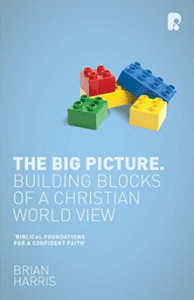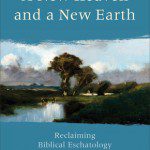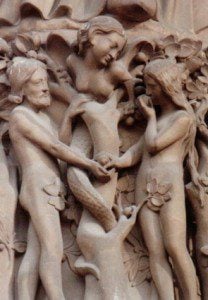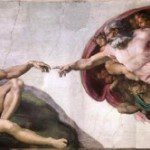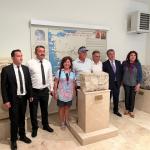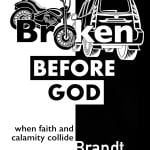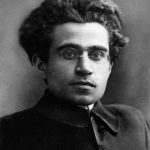 Chapter two of J. Richard Middleton’s book The Liberating Image: The Imago Dei in Genesis 1 turns to the the meaning of the imago Dei in context of 1:26-28 and in the broader context of Genesis 1:1-2:3 and in the context of the symbolic world that gives rise to Genesis 1:1-2:3. Although he sees value in traditional word studies – studies of the words selem and demut translated image and likeness for example – the symbolic context is essential to the interpretation. The text was written in the context of a symbolic world familiar to the original author and readers, but foreign to us today. As no man is an island, so too no text, Middleton reminds us, is an island, sufficient unto itself.
Chapter two of J. Richard Middleton’s book The Liberating Image: The Imago Dei in Genesis 1 turns to the the meaning of the imago Dei in context of 1:26-28 and in the broader context of Genesis 1:1-2:3 and in the context of the symbolic world that gives rise to Genesis 1:1-2:3. Although he sees value in traditional word studies – studies of the words selem and demut translated image and likeness for example – the symbolic context is essential to the interpretation. The text was written in the context of a symbolic world familiar to the original author and readers, but foreign to us today. As no man is an island, so too no text, Middleton reminds us, is an island, sufficient unto itself.
There are a number of significant points to start with:
1. Both selem and demut have a range of meaning in the Old Testament, with selem generally more concrete and demut more abstract. The bible the word selem “primarily designates three-dimensional cult statues of various false gods, which are all roundly condemned in the Old Testament,” (p. 45) although it can also represent other three dimensional representations (e.g. 1 Sam. 6:5). Demut generally refers to a comparison of appearance or form. However these general observations are not absolute, and the multiple possible senses make it impossible to pin down the meaning from word studies alone.
2. In 1:27 there is a poem specifying creation of mankind as male and female:
So God created mankind in his own image,
in the image of God he created them;
male and female he created them.
Middleton does not think this reflects a relational nature of the image of God (contra Barth). Rather, to be male and female is a requirement of the commission God gives to mankind.
[I]ts role is anticipatory, looking ahead and preparing us for 1:28, where human beings (having been created biologically male and female in 1:27) are blessed with fertility and commissioned by God to reproduce, in order that they might fill the earth and subdue it. (p. 50)
3. The syntax of 1:26-28 along with the context of Genesis 1 as a whole leads Middleton to the conclusion that the purpose of creation in the image of God is to rule over creation, and that this purpose defines the image. If I understand the point Middleton is making, it is not that a purpose, or even the purpose, of the image of God is to rule, but that the one who rules is the image of God.
4. Then there is the enigmatic first person plural: Let us make mankind in our image, in our likeness. Middleton does not see this as a remnant of polytheism, or as a indication of the Trinity. “God here addresses the heavenly court or divine council of angels.” (p. 55) The heavenly court appears in a large number of Old Testament texts: Genesis, Job, Psalms, Chronicles, Exodus, Samuel, Kings, Isaiah, Jeremiah, Ezekiel, Daniel. In Psalm 8 the psalmist uses royal imagery to describe mankind, including as well a reference to the heavenly court: You have made them a little lower than the angels and crowned them with glory and honor. You made them rulers over the works of your hands.
Middleton concludes that the sum of the evidence …
leads to the exegetical conclusion that the imago Dei refers to humanity’s office and role as God’s earthly delegates, whose terrestrial task is analogous to that of the heavenly court. In 1:26-28 that is understood as the exercise of significant power over the earth and its nonhuman creatures … Imaging God thus involves representing and perhaps extending in some way God’s rule on earth through the ordinary communal practice of human sociocultural life. (p. 60)
But to understand what humanity as the image of God in creation means in more detail we must go somewhat deeper.
God as King? Middleton next asks if God is portrayed as a ruler, as king, in Genesis 1. This may seem obvious, but the text does not come right out and declare that God is king and it doesn’t describe what God as ruler means. Thus it is worth some consideration (and about 14 pages). There are shared “cultural codes” common to other texts that point in the direction of God as king and what it meant to the ancient Near Eastern audience to use such royal language.
This is an important point – we bring certain ideas to the text from our twenty-first century Western perspective. But many of these are ideas that would be foreign (even incomprehensible) to the original ancient Near Eastern audience. Our mental picture of the earth and the universe is one such example (no globe hanging in space or spiral Milky Way in their mental picture). In the same way the original authors and audiences brought a common understanding to the text. The more we understand this sea of ideas, the better we will understand the intended meaning of the text.
The pattern where God creates by his word – by fiat – is one clue to the intentional royal symbolism of Genesis 1. Both ancient Near Eastern texts outside of scripture and other passages of scripture provide a context where the fact that God “spoke and it was” portrays him as supreme in power and authoritatively sovereign over all creation. The Egyptian god Ptah and the Mesopotamian god Marduk create by speaking in texts that have been found – so the idea is not unique to the bible. Creation through word is also used in Psalm 33 and Psalm 148 to describe the activity of God.
By the word of the Lord the heavens were made,
their starry host by the breath of his mouth.
He gathers the waters of the sea into jars;
he puts the deep into storehouses.
Let all the earth fear the Lord;
let all the people of the world revere him.
For he spoke, and it came to be;
he commanded, and it stood firm. (Psalm 33:6-9)
The presence of the heavenly court is another indication that Genesis 1 intentionally portrays God as ruler. The delegation of power is a third indication. God commands the greater light (the sun) to govern the day and the lesser light (the moon) to govern the night (1:16,18), and commands mankind to rule over fish, birds, and land animals. It is also possible that giving name to day, night, sky, earth, sea, and such would be viewed by the original audience of the text as royal acts “equivalent to the assertion of lordship over these cosmic realms.” (p. 72)
It is also important that we not let our 21st century notions of kingship or sovereignty define the portrait of God as ruler or creator-king in Genesis 1. God as creator-king is also an artisan. There is a form and majesty to creation as portrayed in Genesis 1 and this form and majesty helps to define the role of humanity created to be God’s image in the world. In the next post we will look at this in more detail.
If you wish to contact me directly you may do so at rjs4mail [at] att.net.
If interested you can subscribe to a full text feed of my posts at Musings on Science and Theology.






